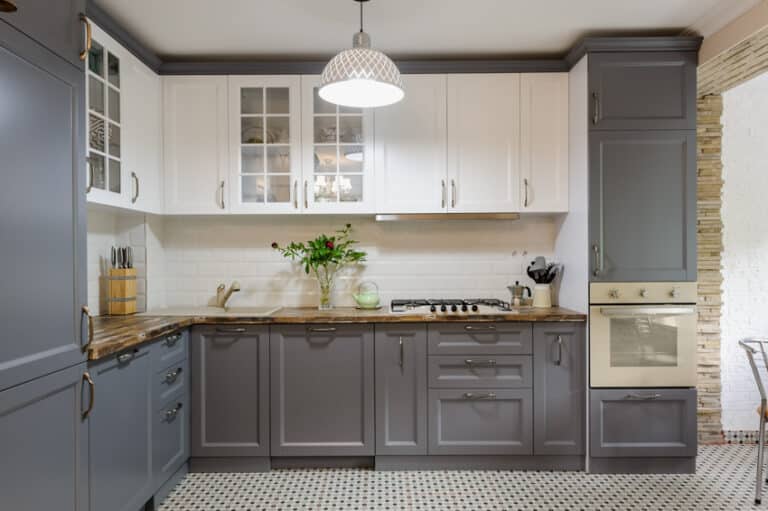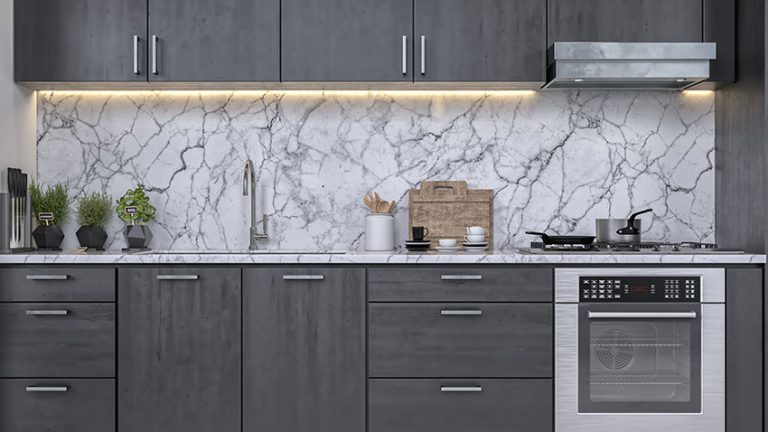Cedar Kitchen Cabinets (Pros and Cons)
Here, I’ll share the pros and cons of cedar kitchen cabinets, their durability, cost, and different types like natural, red, white, rustic, modern & outdoor cabinets.
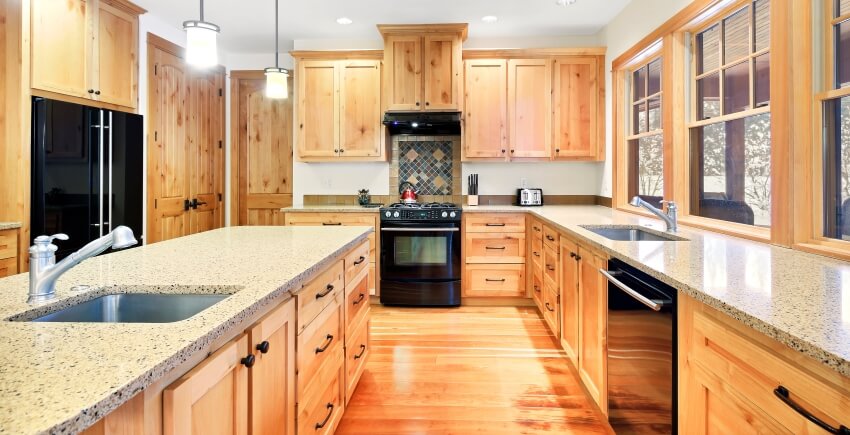
In my experience with cedarwood, I’ve found it has several properties that make it ideal for use with kitchen cabinets and several things to be aware of. One of the most noteworthy features is how beautiful the wood is and the availability of different wood grains and colors. However, this comes at a cost, which is the overall softness of the wood and its rustic knotty appearance.
What Are Cedar Cabinets?
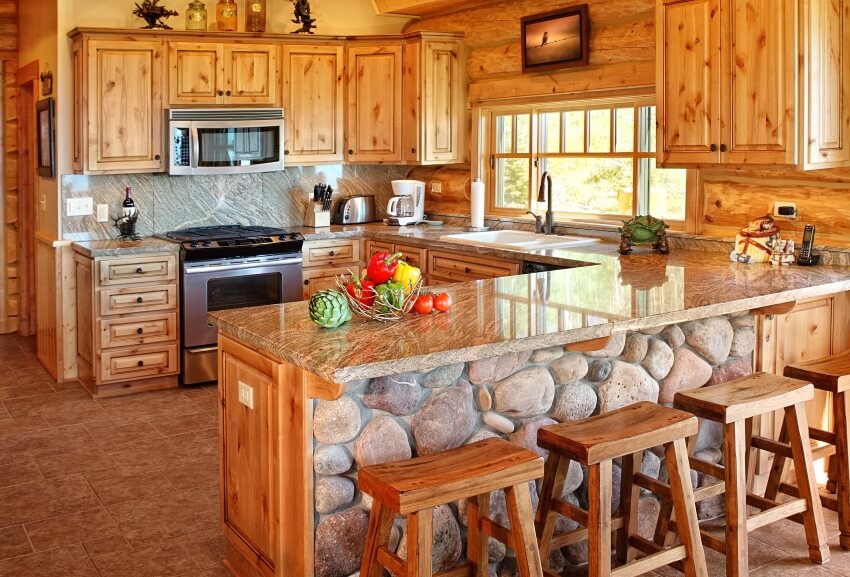
Cedar wood comes from different fragrant trees belonging to a group of plants known as “gymnosperms,” which includes pine and fir trees. Some of the most popular species are found in North America, such as red timber, which is most used in woodworking and grows on both the East and West Coasts.
Eastern red cedarwood, which grows on the West Coast, is a harder and more robust wood, and the white cedarwood is found along the East Coast of the United States.
While yellow cedarwood grows in Alaska, and Spanish cedarwood exists in Central and South America. These two types are declining and considered vulnerable to extinction, so there are environmental impacts of harvesting and transporting them.
Cedar is a softwood known worldwide for its beauty, versatility, and spicy aroma. It has a low density that tends toward the lower end of the hardness scale. However, it is famous for its being lightweight.
The colors of the wood vary and may be red, white, or yellow, but it is the warm red tones that are prized as a natural wood for closet floors, ceilings, walls, and wainscoting, as well as kitchen cabinetry.
Cedar Kitchen Cabinets Pros and Cons
Cedar has several beneficial qualities that make it ideal for use in kitchen cabinets due to its tight, straight-grain pattern and pleasing fragrance that is aesthetically beautiful. However, keep in mind that this timber also has several problems.
Pros of Cedar Kitchen Cabinets
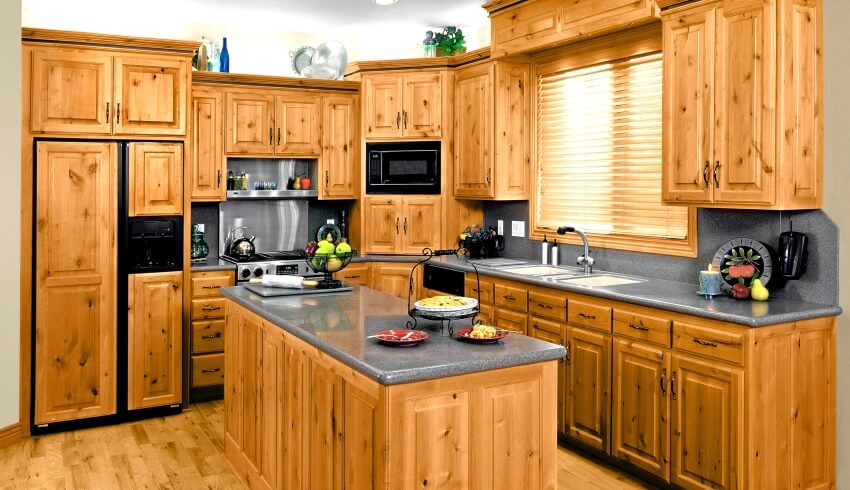
Due to its chemical properties, cedar is a natural insect repellent. The oil in the wood can repel most bugs like termites, ants, moths, mosquitoes, and cockroaches.
Cedar is naturally weather-resistant and can thrive in damp climates. It is durable and doesn’t shrink, swell, or warp, even when there are severe changes in weather which makes it such an ideal choice for exterior applications. Even if left untreated, it will not be prone to the devastating effects of mold, rot, and insect damage.
Cedar is a porous wood that absorbs noise, giving it a sound-resistant quality and making it a popular choice for the exterior and interior of homes and buildings. It is frequently used outside the home for fences, decking, and exterior siding.
Cedar is a strong softwood with high compressive strength and bending strength, and good dimensional stability than many other kinds of wood. It is less likely to crack and warp in the presence of moisture.
The compressive strength and bending strength of the Aromatic Red Cedar Compressive Strength is 6,020 psi and Bending Strength of 8,800 psi; the Western Red Cedar has a 4,560 psi Compressive Strength and 7,500 psi Bending Strength while the White Cedar has 3,960 psi and Bending Strength of 6,500 psi.
Cedar is naturally beautiful, so typically, a clear coat finish is used to highlight its natural color to enhance cedar’s durability. The wood accepts sealers and stains beautifully; regular applications of sealer and refinishing every two to three years help it retain its color and stability.
Cons of Cedar Kitchen Cabinets
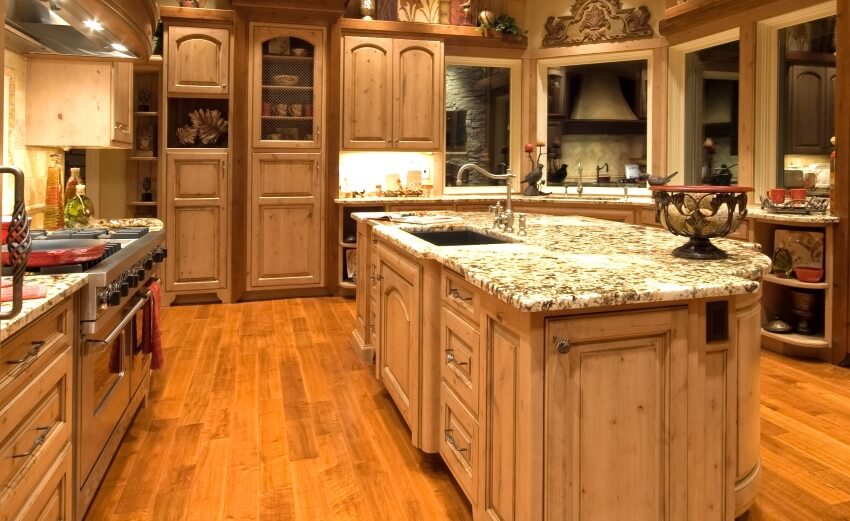
Cedar is not commonly used as a structural component for supporting heavy loads because it is not as strong as other lumber.
Over the years, cedars can develop checks. These checks are cracks or openings that form along the surfaces of the wood parallel to its natural grain direction—checking results from cycle variation in the wood’s moisture content.
Although the outer layers of wood fiber can flush out moisture quickly when temperatures warm up, the inner layers expel moisture at a much lower rate. As a result, the outer layers shrink inwards, and when they hit the denser, moisture-heavy inner layers, they crack on impact.
Cedar can darken dramatically when exposed to sunlight, wind, and rain. It can lose its golden-brown color and eventually develops a silver-grayish color. It can also build up a fuzzy surface texture unless it’s periodically refinished.
Applying clear sealers with UV protection will help keep the rich color of the natural wood and should be applied every year or so. However, remember that even with the proper maintenance, its surface will usually fade after about ten years. It will then lose its natural tone for good.
Cedar is also prone to dings and scratches. If placed in direct contact with the ground or set in concrete, though it may last for a while, eventually, it will rot and deteriorate.
Natural Cedar
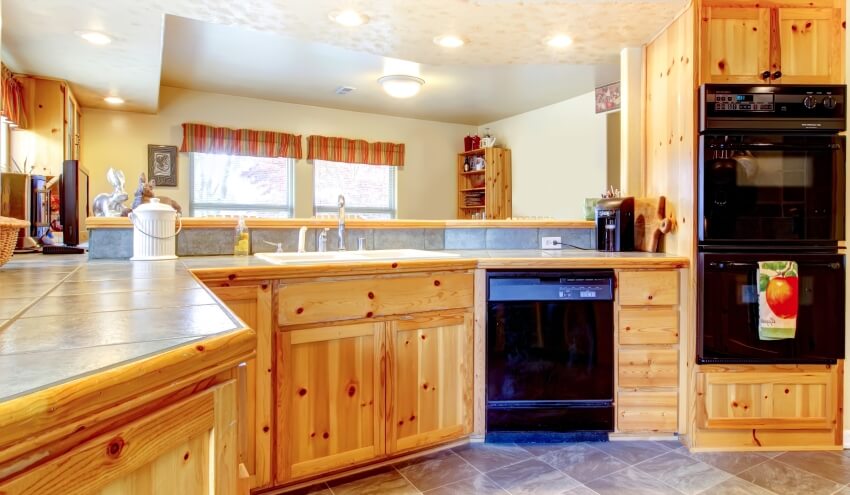
Most types of cedar wood are pinkish-red, which loses its reddish hues and becomes a silver or gray color since all-natural wood changes colors over time due to chemicals in the wood, like oil, and its exposure to the environment, such as oxygen and UV rays.
Typically, lighter wood will usually darken, and darker wood will lighten. However, cedarwood is unique since its color shifts dramatically and rapidly, turning into silver or gray instead of mellowing out, blending, or developing a patina. See more pictures of natural wood kitchen cabinets here.
Red Cedar
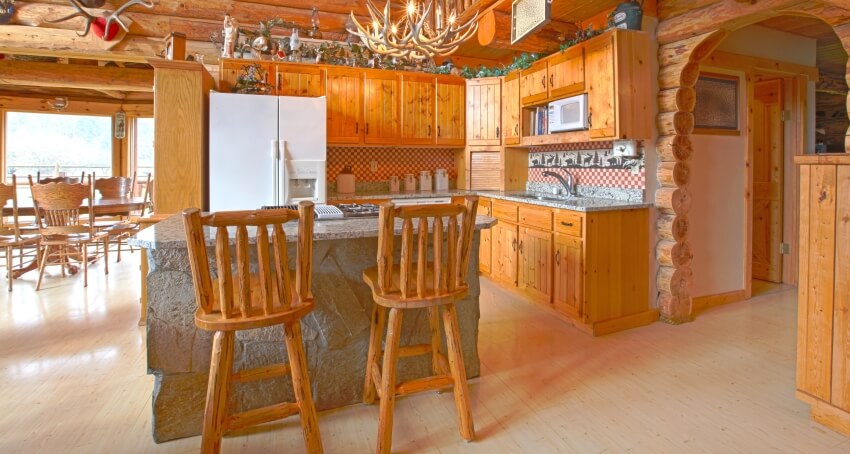
The western red cedar is a member of the cypress family, a species native to North America’s Pacific (northwest) coast. It grows from southern Alaska through northern California and in the Rocky Mountains. These trees may grow up to 200 feet tall, and their trunks can reach a diameter of ten feet.
Western red varieties have a consistent reddish-brown tone, sometimes tinged with pink, and has both clear grades and knots in lower grades.
Most homeowners who use western red cedarwood for their kitchen cabinets love the wood’s natural appearance. This is best sealed using transparent finishes such as waxes, shellac, and other clear film-forming finishes. These finishes protect the cabinetry from minor abrasion and liquids and make cleaning easier.
It looks stunning and performs excellently, too, due to having a naturally high resin content that serves as an excellent natural insect and rot resistance. It can also repel water, and its low density and light weight make it easy to cut and shape for any kitchen cabinet design style.
Another great thing about western red is that it doesn’t absorb much heat, making it perfect for kitchen cabinets as they will stay cool to the touch even when cooking makes the kitchen area hot.
Eastern red cedar also belongs to the cypress family and grows throughout the eastern United States. Usually, it reaches a height of just twenty to forty feet, though some trees reach 100′ or taller.
Known as an “aromatic cedar,” the eastern red has natural aromatic oils that effectively ward off insects and repel bugs. The heartwood of this type of timber bears pinkish-red tones with an occasional purplish tinge and deep reddish-brown streaks. It has knots that are often present throughout the wood.
The best finish for the eastern red wood is polyurethane or lacquer. The resins in eastern redwood can cause finishing problems when placed in confined spaces since they inhibit the proper hardening of oil finishes.
White Cedar
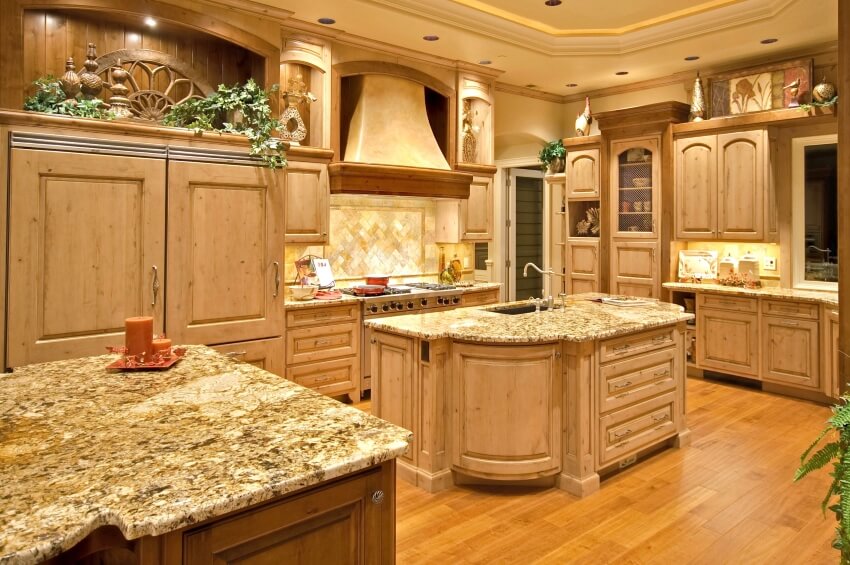
Northern white cedar is known as the “arbor vitae” (tree of life) grows in southeastern Canada and the northeastern quarter of the United States, specifically around south to Tennessee and west into Iowa. It grows up to fifty feet tall with 2′-diameter trunks. It possesses a natural beauty and superior insulating qualities.
Like the western red, the northern white is naturally resistant to decay because of its closed cell structure and is resistant to insect infestation due to its natural wood resins.
It is not prone to splintering and is excellent for indoor applications such as kitchen cabinetry. However, this variety proves less dense than the western redwood and tends to be brittle, tearing out without sharp cutters and backer boards.
Northern white cedarwood has the highest R-Value of all wood species, almost 30% higher than pine. Northern white cedarwood is resistant to settling, warping, or checking problems, the lowest shrinkage of all wood species. It also does not absorb water, allowing mold or fungus to grow inside logs.
The Northern white slow growth results in a tight growth ring, meaning fewer knots and a beautiful grain surface.
Rustic Cedar

Knotty cedarwood is a type of wood often used in rustic kitchen cabinetry due to its unique look. It is known for its beautiful grain and rich color, and these characteristics make it an ideal choice for Rustic kitchen cabinetry.
Cedarwood cabinets will age gracefully over time, developing a beautiful patina that adds charm, character, and rustic appeal. Rustic cedarwood cabinets are often made from reclaimed wood, which combines function and style and gives them a unique look. These cabinets can be finished in various ways, ranging from a natural stain to a distressed finish.
They are a perfect choice if you are looking for a rustic, country feel, or simply want to add some elegance to your kitchen. So, if you’re ready to update your kitchen with rustic style and beauty, these cabinets are a beautiful and durable choice for any home.
Modern Cedar Wood Kitchen Cabinetry
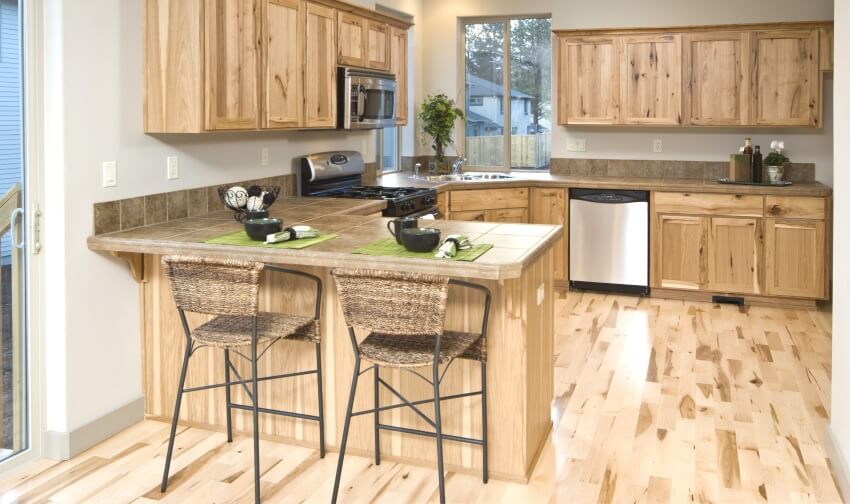
Cedarwood kitchen cabinets are a popular choice for modern kitchens due to their durability and attractive appearance. These cabinets are made from cedarwood, a type of wood resistant to moisture and rot, making them ideal for use in kitchens exposed to the elements.
Cedarwood adds warmth and character to any kitchen with its beautiful grain and warm tone. When choosing cedarwood cabinets for your kitchen, it is essential to select a style that complements the overall aesthetic of your home.
Some features of modern cedarwood kitchen cabinets include clean lines and simple hardware, allowing them to blend seamlessly with other modern appliances and fixtures in your kitchen.
Additionally, these wooden cabinets are typically more budget-friendly than other materials, such as stainless steel or granite, making them a practical choice for many homeowners.
Cedar Outdoor Cabinets
Cedar is a type of softwood that is commonly used for outdoor furniture and cabinets. Its popularity is due to its many advantages, which include its resistance to rot, insects, and moisture. It is also a strong and durable wood, making it ideal for use in outdoor kitchen cabinets that are exposed to the elements.
Additionally, cedar’s natural resistance to rot and moisture makes it perfect for kitchens near pools or other humid environments. Additionally, this kind of timber has natural anti-fungal and anti-bacterial properties, which helps to protect against mold and mildew growth in damp conditions.
In addition, kind of timber has a beautiful warm, natural distinctive grain that can add a touch of elegance to any outdoor kitchen. This timber is an attractive and timeless wood choice for any outdoor kitchen because it has good weather resistance and other outdoor elements.
Kitchen cabinets made from cedarwood will last for many years and can be used as an alternative wood for hardwood Teak for less money and less heavy, making them a wise investment for any homeowner.
So, if you’re looking for durable, stylish outdoor cabinetry that adds character to your home, this wood is the perfect option!
Cedar Durability
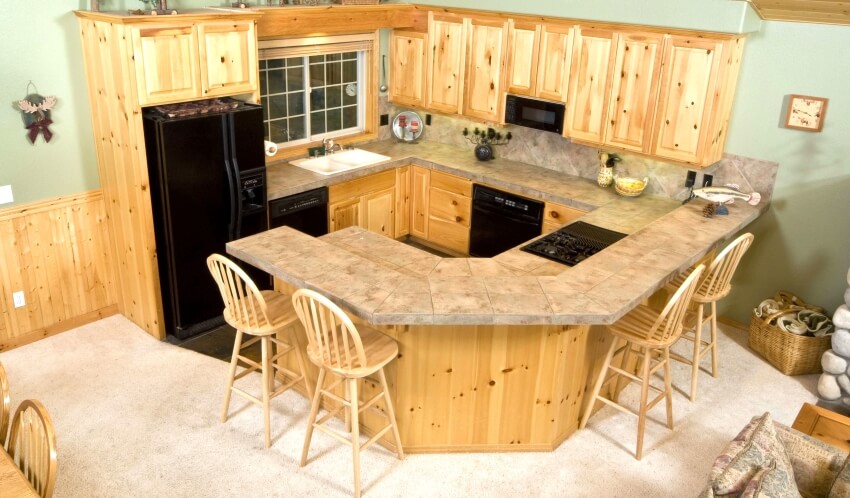
Cedarwood is a popular material for making cabinets due to its durability and strength. Its strength depends on the values of several other factors, such as density, hardness, and stiffness.
The densities of cedarwood species are low, making it lightweight. However, it has an excellent strength-to-weight ratio, which means its strength is significant according to the weight of the wood.
Cedar is a soft, pliable wood that can easily work with hand or machine tools. It has excellent durability and will not warp like other woods when wet because it contains natural oils that protect its cells from moisture damage – but this also means you should avoid exposing your kitchen cabinets to too much water.
Does Cedar Last Longer Than Oak?
Oak and cedar are well-known woods for construction since both are easy to work with. Although cedar is a softwood, it excels in exterior applications that require rot and pest resistance and lasts more than 20 years without splitting, rotting, or warping.
The Eastern red variety is resistant to insect attack, whereas Western red has mixed resistance to pests. On the other hand, red oak heartwood is non-durable to perishable and displays poor insect resistance.
Due to its long growing time, oak wood is solid, dense, and strong. Oak has high durability and resistance to moisture and humidity. White oak cabinets have a Janka hardness of 1350, while red oak cabinets have a 1220 Janka hardness. White oak has medium crush strength, whereas red oak has high crush strength.
Eastern red has a Janka hardness of 900, while Western red Janka hardness is a mere 350. Cedar kiln dries quickly and well, and air dries with little degradation and shows little tendency to split, check, or warp. Both oaks and cedars possess low stiffness, making them good materials used for steam bending.
Which Is Cheaper, Cedar Or Oak?
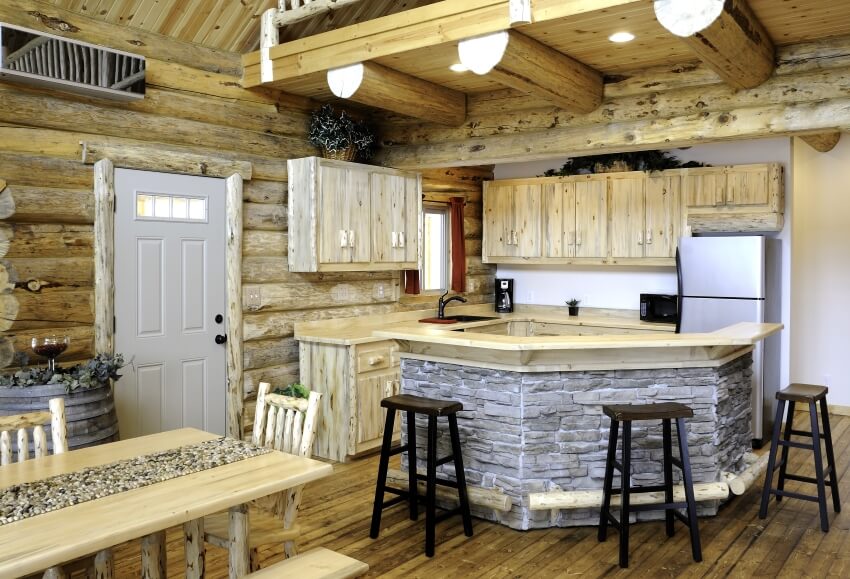
Oak wood is expensive because it is hardwood and is denser and more durable. However, oak is one of the cheapest hardwoods. In the market, white oak is available at $9.99 per board foot, while red oak comes in slightly cheaper at $5.49 per board foot.
On the other hand, cedarwood is expensive because it is resistant to moisture, and supply is often low. The increase in demand makes it expensive as can be seen with Eastern red cedar selling for around $6.29 per board foot.
Western red cedar costs about $5 to $9 per linear foot, while Northern white cedar retails between $4 and $7 per linear foot.
Visit our honey oak cabinets design guide for more related content.





